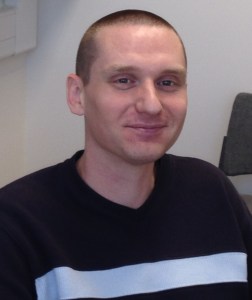
Claudia de Rham is an assistant professor at Case Western Reserve University working on cosmology and particle physics and is particularly interested in models of modified gravity and their embedding within consistent field theory frameworks.
How does matter couple in theories involving several metrics? We unveil the possibility for a new effective metric.
While the theory of general relativity will mark its 100 year anniversary next fall, the realization that the expansion of our universe may currently be accelerating has opened up the door for a series of investigations to understand the behavior of gravity at large distances – as large as the current observable Universe or about 1010 light years. Among the different possible modifications of gravity explored in the past decade, theories of gravity which involve several metrics have played a crucial role. The idea that gravity could be the outcome of several interacting metrics is of course not a new concept and such theories have been explored for more than 70 years, but their consistent realization has only been derived very recently in the past few years, and we are finally reaching a stage where we can understand more precisely how matter couples to gravity in such theories. Continue reading










You must be logged in to post a comment.